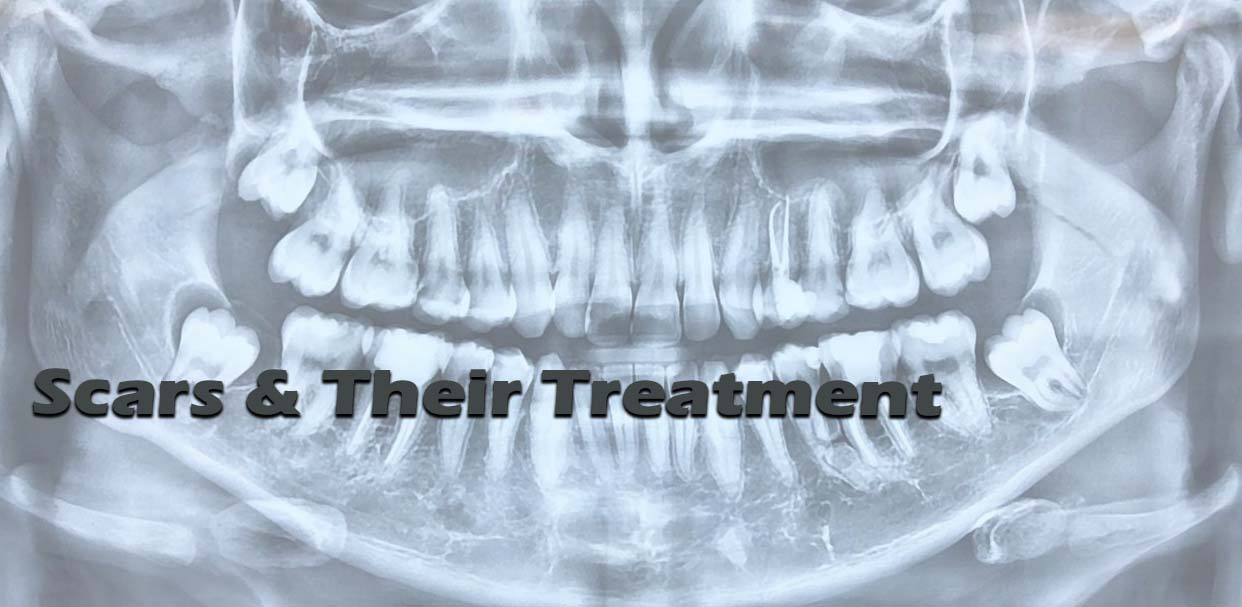What are scars?
Scars are produced as part of the body’s normal healing process.
No matter how careful or meticulous the repair after an accident or operation, there is always a permanent and visible mark.
The quality of the scar varies from one individual to another and from one part of the body to another. It is impossible to be sure how a scar will eventually look. The scar may be very stretched or may at first be irregular and become smoother with the passage of time.
The scar may become redder, harder and more raised (up to 4 months post-injury) but will hopefully settle over a period of 12 – 18 months, when it becomes more supple, flat and pale (it has ‘matured’).
Looking after your scar
Massage can help to heal scars. It reduces the tendency for the skin to stick to any underlying structures and is thought to speed up the healing process, reducing the redness and irregularity.
Massage should involve moving the scar on the underlying structures rather than rubbing the surface of the scar itself. For best results this should be repeated for 5-10 minutes, several times a day, perhaps after washing and bathing. Lanolin, Vitamin E oil or a neutral moisturiser can help to lubricate the wound during the massage.
You will need to wait until the scar is strong enough before you begin massaging. It is wise to ask the doctor or nurse after the stitches are removed when the best time to start massaging the scar is.
Protecting your scar from sunlight
Scars are more prone than normal skin to injury from sunlight.
It is best to avoid exposing a scar to strong, direct sunlight for the first 12 – 18 months following injury. A sun-block cream with a high SPF (Sun Protection Factor > 30) and a wide-brimmed hat for scars on the face will help if you cannot avoid going out in the sun.
If scars are allowed to tan, they may fade to leave a mottled, patchy appearance. Scars often itch in the heat so staying out of direct sunlight may increase comfort.
Treatment For New Scars
Steroids
Giving steroids by injection is one of the oldest and most- established approaches to treating scars.
The drawbacks of this treatment are the number of side effects brought about by repeated injections (pain; infection; localised skin death; dilated superficial blood vessels and the depressing of the scar) and the frequent occurrence of de-pigmentation (white patches on the skin).
Non-Steroidal Anti-Inflammatory Drugs (NSAIDS)
Although NSAIDS have been used to prevent internal scarring in arthritis for many years, they have only recently been used for treating hypertrophic and keloid scars.
Research has found that salicylate compounds (as used in acne) applied directly is very effective on new scars. Using salicylate this way should be done under a doctor’s guidance since some patients, particularly asthmatics, may develop sensitivity to the drug.
Anti-Histamines
These are commonly used to control the itching caused by new scars but they do have other anti-scar properties.
Anti-histamines subdue the inflammatory response resulting in a smaller and more comfortable scar. Patients taking anti-histamines are less likely to scratch their scars which reduces the scar growth rate and high-dose anti-histamines can slow down the production of collagen in the skin (which is responsible for scar formation).
Elastic Wraps
Elastic support and clothing are commonly used in scar prevention. The drawbacks are that they retain heat and restrict movement.
Sheets of hydrogel and silicone dressings are sometimes used to prevent excessive scarring. They increase the moisture in the skin over the scar and affect the scar temperature.
They can be used in conjunction with anti-inflammatory creams and ointments to lessen scarring, and are available in some chemists.
Treatment for Old Scars
Mechanical tension blockers
Several drugs commonly used to treat high blood pressure can be used to cause the breakdown of older ‘settled’ scars. ‘Calcium channel blockers’ injected into the scar can encourage the scar to break down.
Surgical Removal / Scar Revision
Surgical removal is usually only used for big scars that are unlikely to fade using any of the methods listed above over a reasonable time period. Surgery can also help scars that harbour infection and scars that hamper movement.
This kind of precise surgery has to be supported by additional measures to reduce swelling, ease skin tension and other factors in order that further scarring doesn’t occur.
Use of lasers and other burning methods
Laser use and other burning techniques have been used for scar removal but as yet there is not enough evidence to support them as a reliable method for treatment and their use is still considered controversial.




 Ask Prof. Hegab
Ask Prof. Hegab +201004401598
+201004401598

